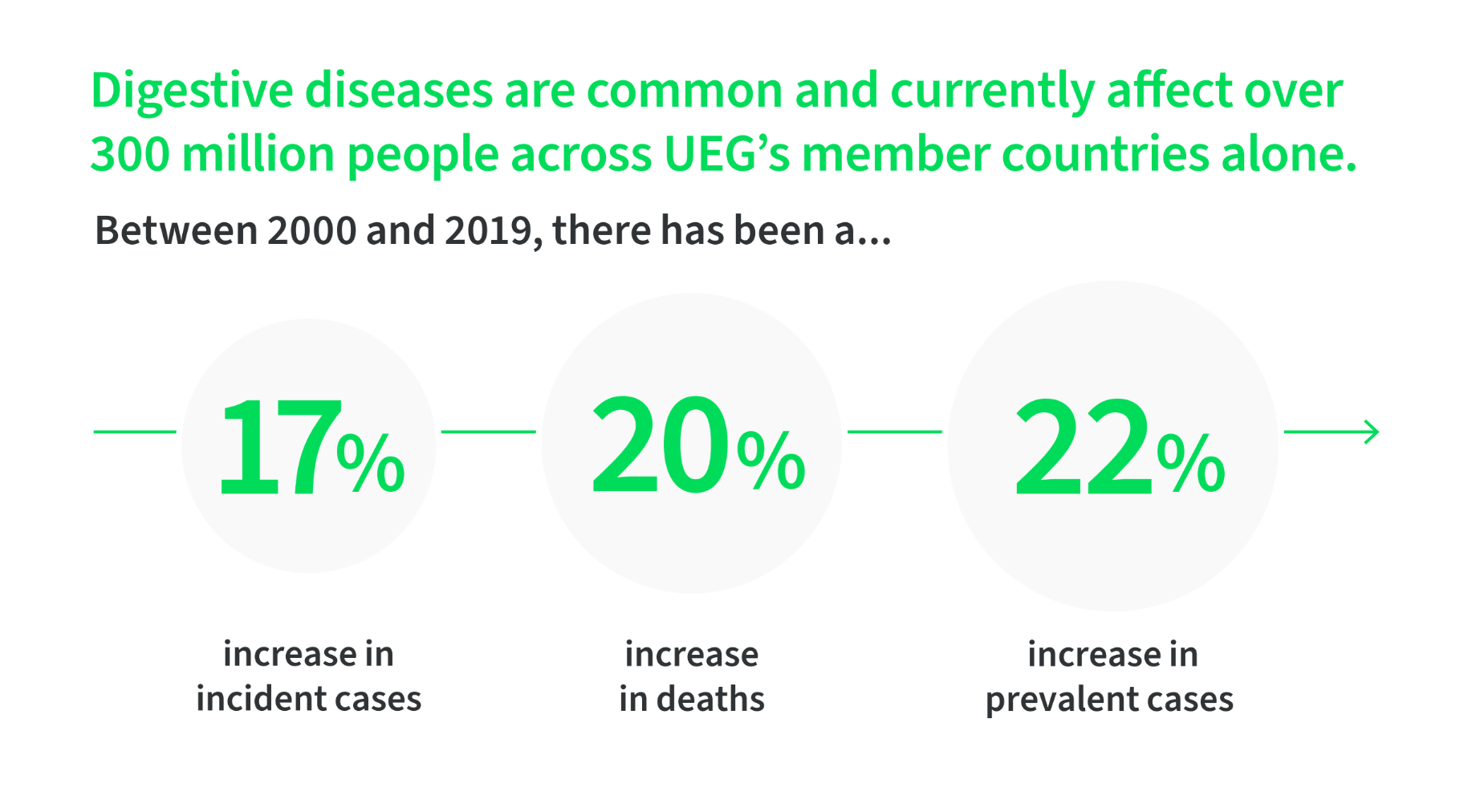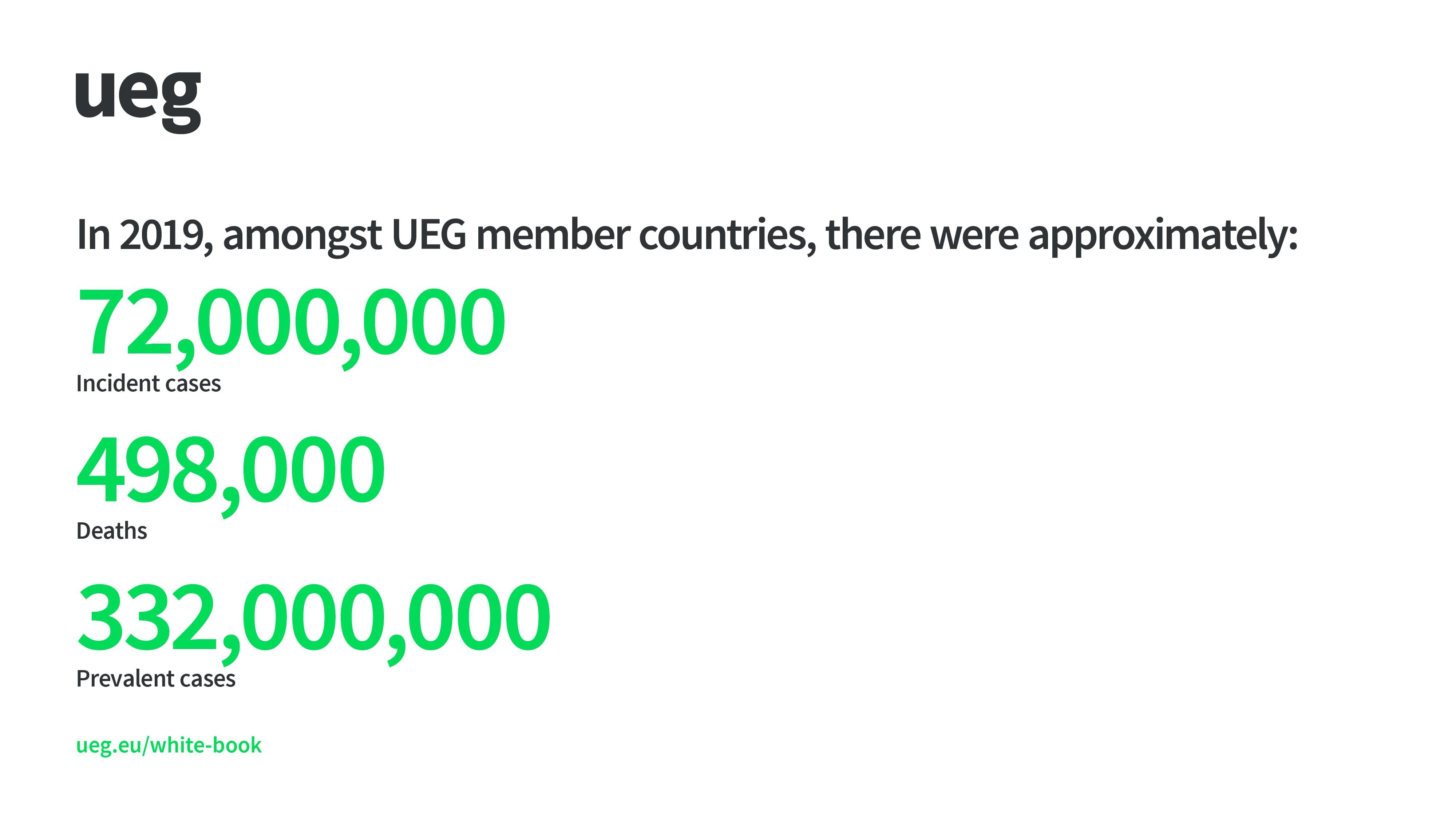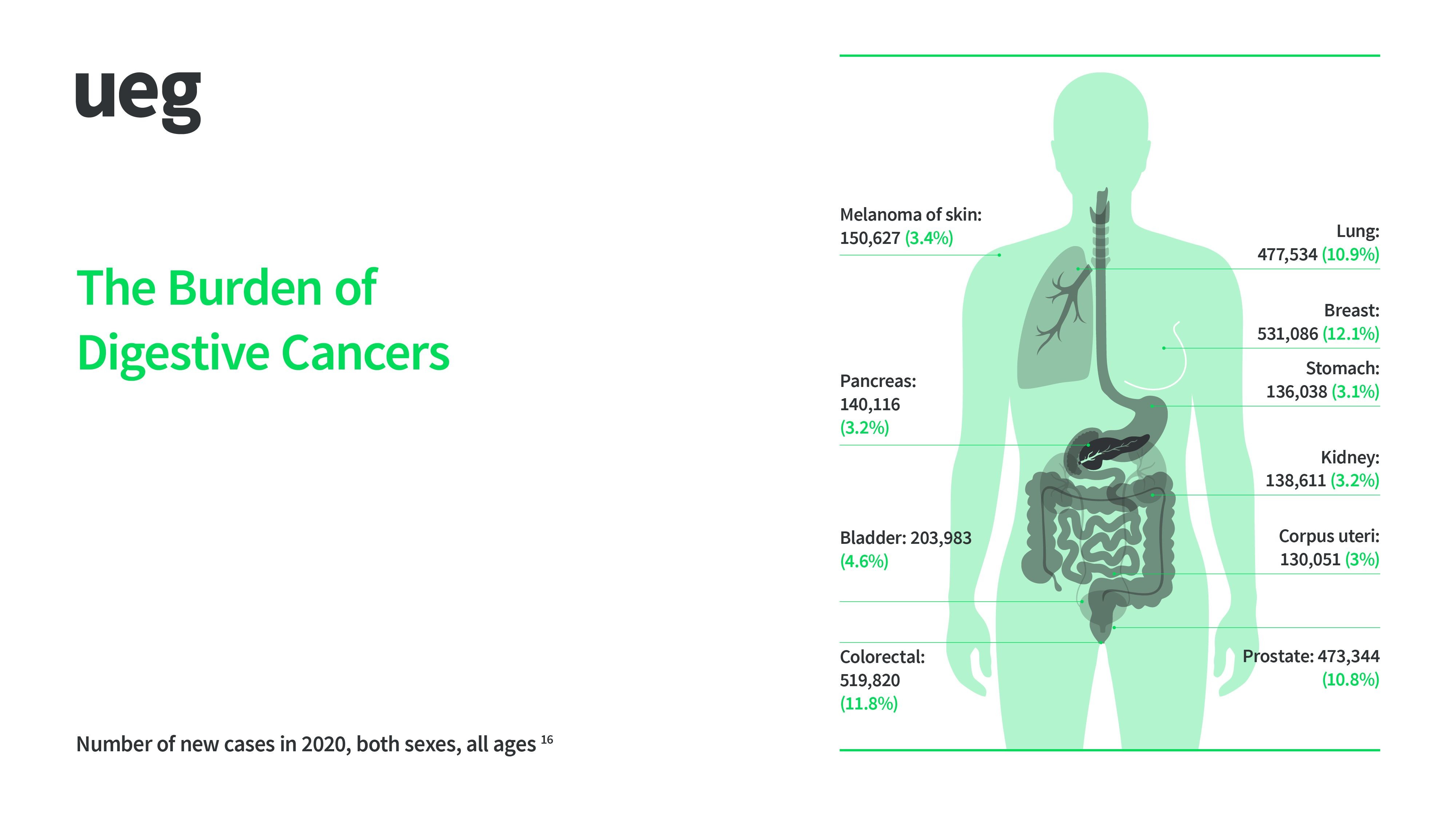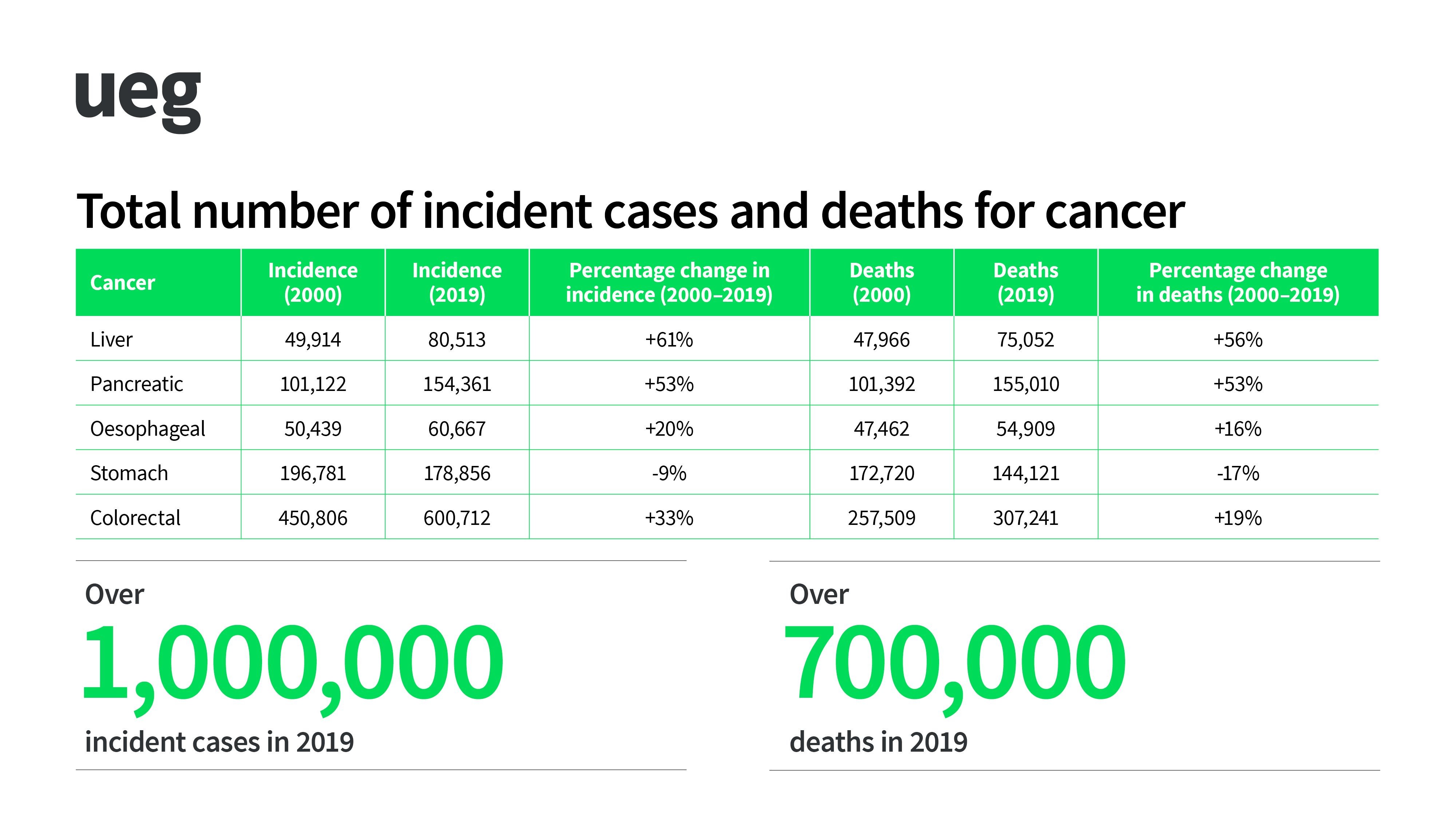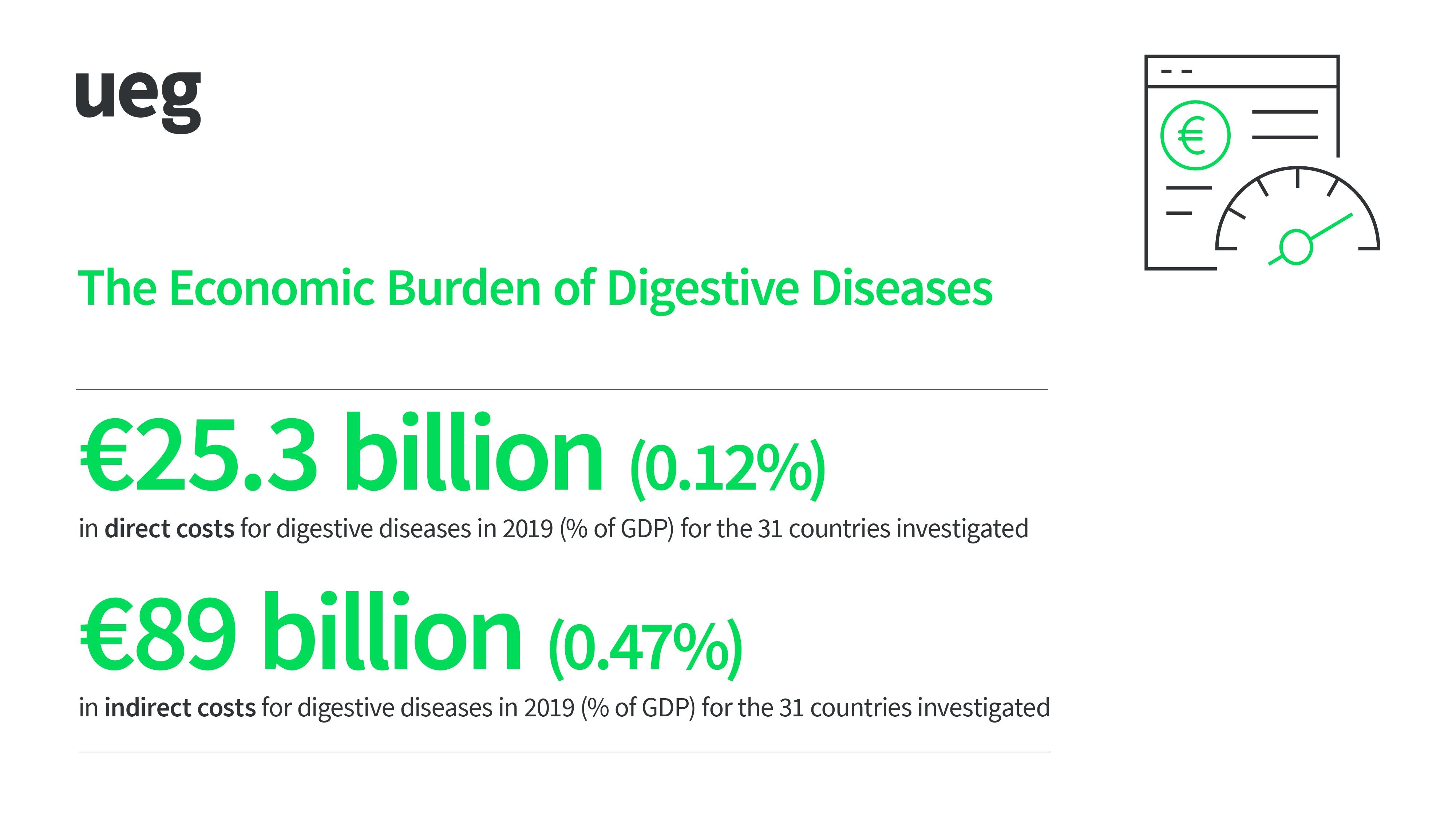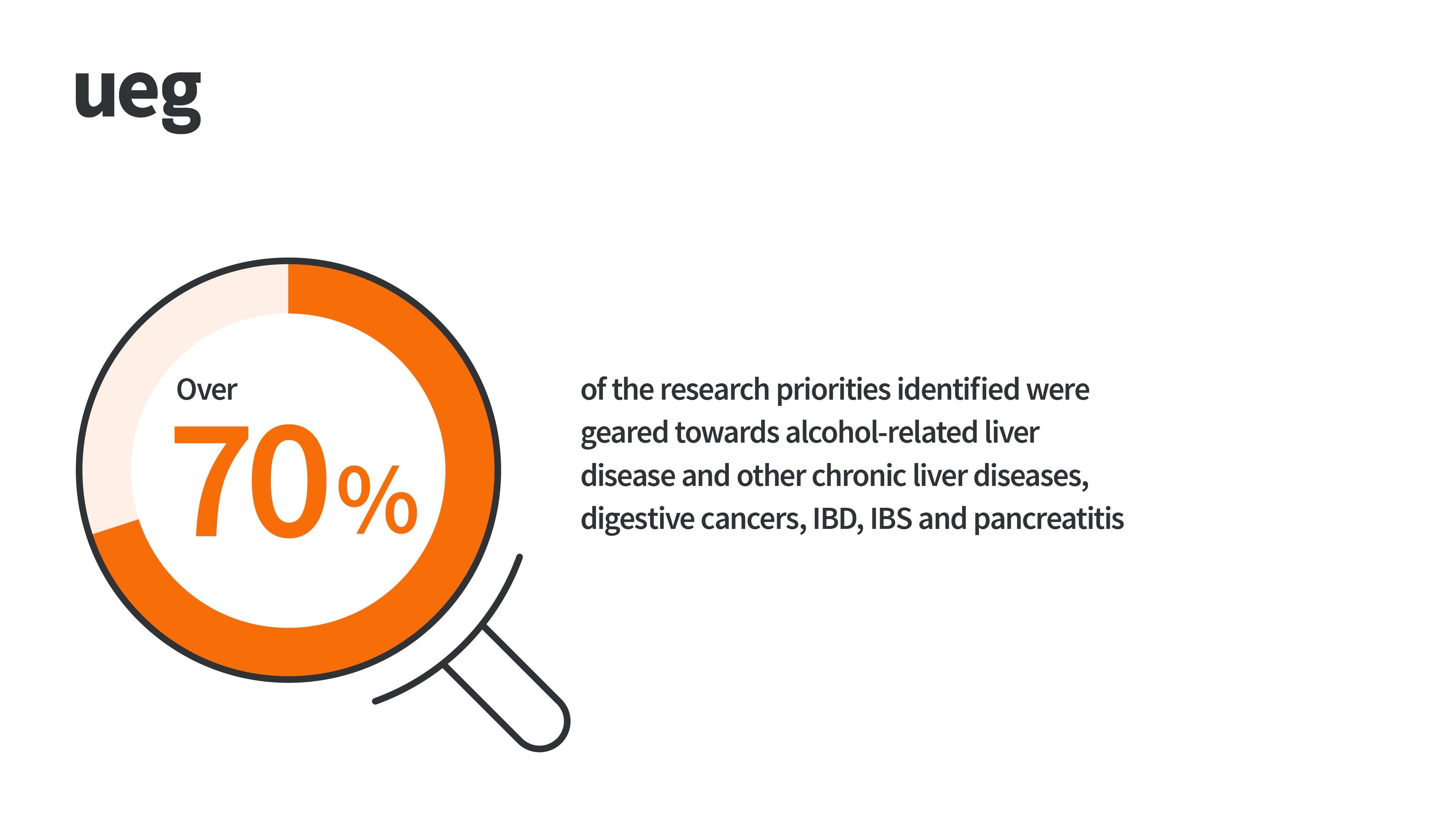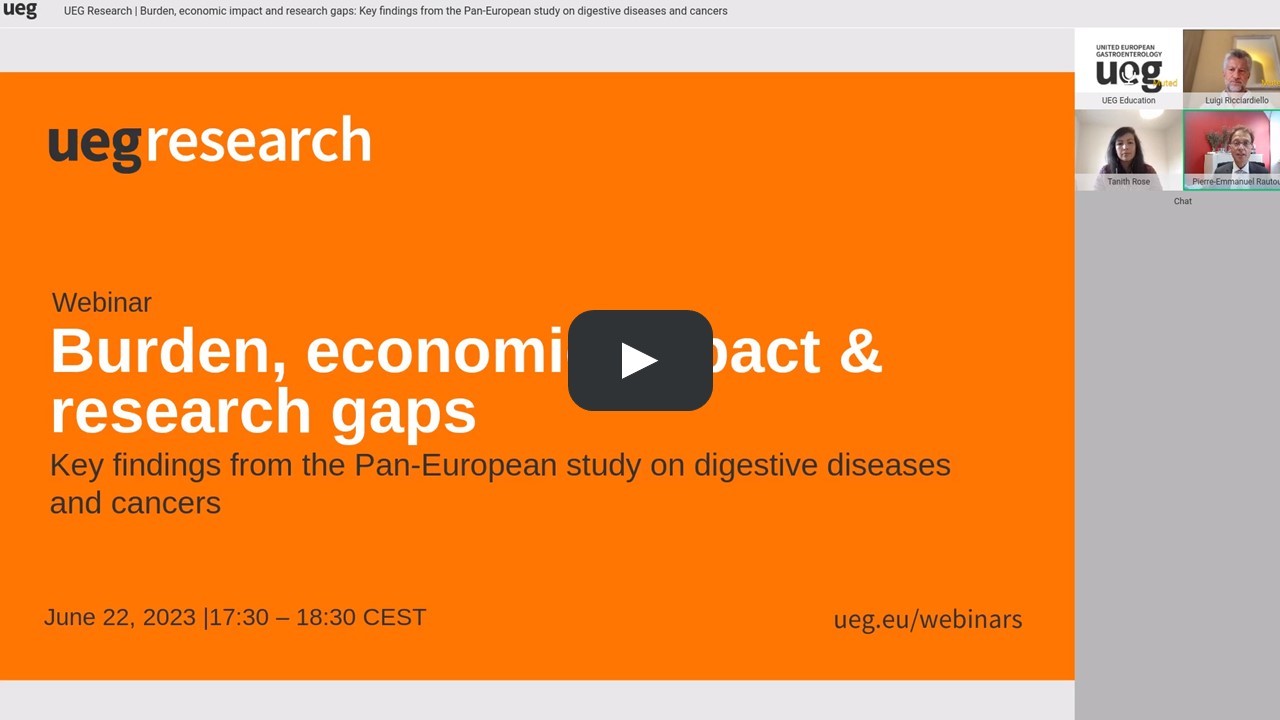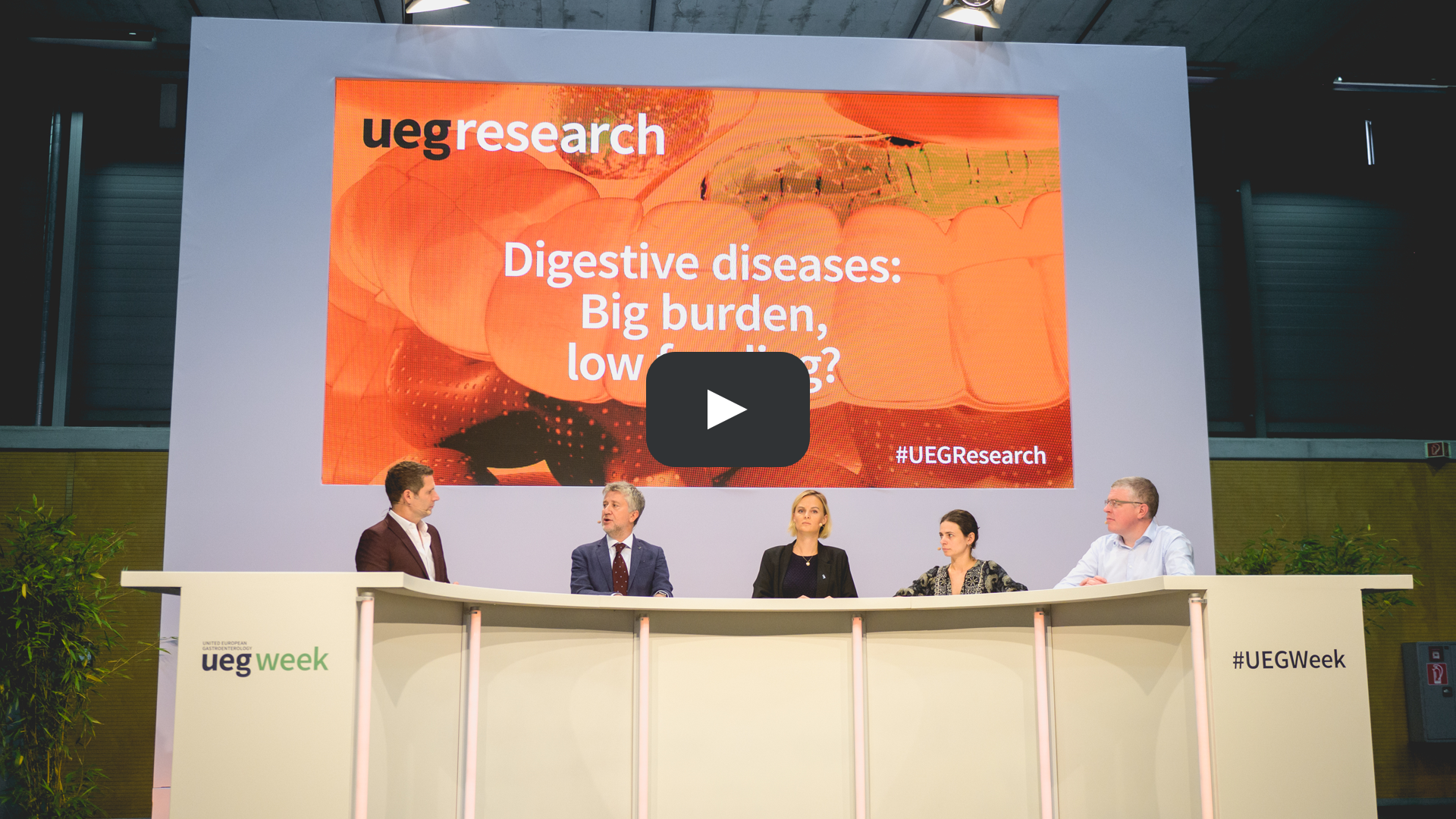This page is entirely dedicated to the key findings from the White Book 2 study and touches upon four major themes:
- The burden of digestive diseases
- The burden of digestive cancers
- The cost of inaction
- Funding and research opportunities
Want to learn more about our dynamic, recent White Book 2 study? Read on to explore more in-depth details and infographics, as well as access our full reports.
The burden of digestive diseases
Digestive diseases exert a substantial public health and economic burden across Europe. In 2019 alone, there were approximately 498,000 deaths and 332,000,000 prevalent cases of digestive diseases. This upward trend in the number of cases is concerning as several digestive diseases are associated with an increased risk of digestive cancers.
Whilst the contribution of risk factors will vary considerably by disease and country, a high body mass index (BMI) and alcohol consumption are major contributors to the digestive disease burden and the observed increases in cases. In addition, socioeconomically disadvantaged groups are disproportionately affected by these increases.
The burden of digestive cancers
The most common digestive cancers, which include primary liver, pancreatic, oesophageal, stomach (gastric) and colorectal, exert a considerable health and societal burden. Being the leading cause of cancer death in Europe, digestive cancers are responsible for over a third of all cancer-related deaths. In 2020, of the top ten cancers with the newest cases across Europe, three were digestive cancers.
Across Europe, the economic burden associated with digestive diseases is substantial, with significant costs arising from both within and outside the health system. With a lack of studies currently available regarding the economic burden of digestive diseases, research into this area is urgently required.
Digestive diseases and cancers exert a substantial public health and economic burden across Europe. Unfortunately, despite their significant and increasing burden, they remain poorly understood, attracting relatively little attention in terms of policy, funding and research.
Some key observations revealed by our newest study:
- Digestive diseases and cancers are underfunded compared with some non-digestive diseases.
- A large proportion of digestive diseases, including IBS, gastroesophageal reflux disease, eosinophilic oesophagitis and coeliac disease, which are on the rise, received limited, if any, research funding in the form of Horizon 2020 grants.
- Alcohol-related liver disease is both underfunded and under-researched in relation to the high level of burden associated with this disease.
Curious about the full White Book 2 study?
Part 1: The burden & economic impact of digestive diseases
This report provides an international comparative analysis of the public health burden of digestive diseases and cancers, and an assessment of the economic impact of digestive diseases.
Part 2: Research gaps & priorities
This report provides an exploratory overview of research priorities, activity and funding in the field of digestive health in Europe.
Key findings on digestive diseases and cancers in Europe
After the publication of the UEG White Book 2, it is now time to pave the way for more effective prevention strategies, improved outcomes for patients and increased funding into digestive health research on EU level. We have now launched a new publication highlighting the key findings on digestive diseases.
Executive Summary in UEG Journal
This article in UEG Journal highlights the main outcomes of the White Book 2, especially worrying increases in the prevalence of several digestive diseases since 2000 and priority areas where research and investment are required.
Watch our latest recordings regarding White Book 2
UEG Research Webinar (2022)
Burden, economic impact and research gaps: Key findings from the Pan-European study on digestive diseases and cancers
Access your White Book 2 Toolbox: Here you can find everything you need for your presentations!
Free White Book 2 PPT Presentation
UEG Image Hub (scientific images)
